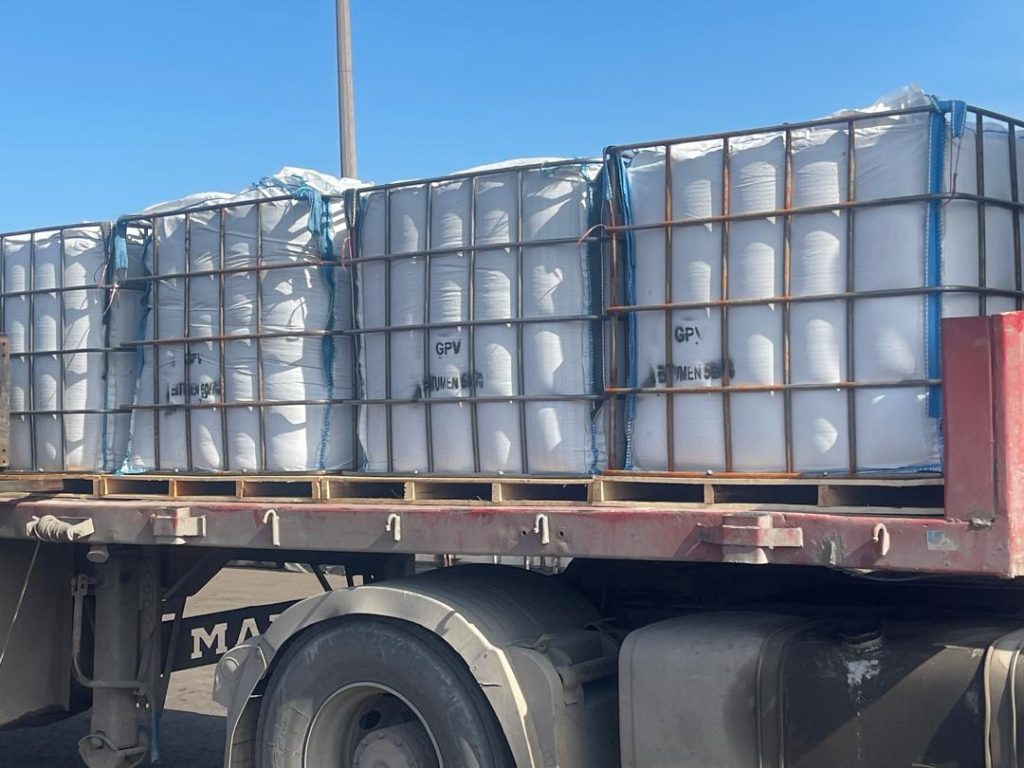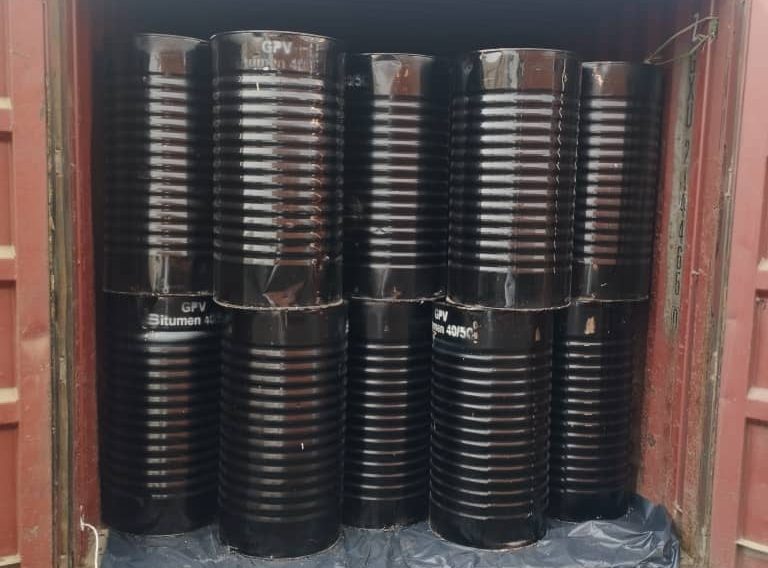Kenya Bitumen Market Trends 2025
The Kenyan bitumen market has witnessed significant evolution in recent years, shaped by infrastructure development initiatives, regional economic factors, and global market dynamics. This comprehensive analysis examines the current state of the bitumen industry in Kenya, exploring price trends, supply-demand dynamics, market growth patterns, geographical distribution, and technological advancements. As a crucial component in Kenya’s expanding road network development, the bitumen market serves as both an indicator and enabler of the country’s economic growth trajectory. Understanding these dynamics offers valuable insights for stakeholders across the construction, petroleum, and infrastructure development sectors.

Price Trends in the Kenyan Bitumen Market
Price trends in the Kenyan bitumen market have shown considerable volatility over the past five years, influenced by multiple factors including global crude oil prices, regional supply constraints, and local demand fluctuations. The pricing landscape has been characterized by periodic adjustments that reflect broader economic conditions within East Africa.
- Current pricing levels: As of early 2025, the average price of bitumen in Kenya ranges between KES 85,000 to KES 92,000 per metric ton, representing a 12% increase from 2024 levels.
- Historical trajectory: Between 2020-2025, prices experienced a compound annual growth rate (CAGR) of approximately 6.8%, with notable spikes during periods of global supply chain disruptions.
- Price differentials: Significant variations exist between imported and locally produced bitumen, with the latter typically commanding a 7-10% premium due to perceived quality advantages and reduced logistical complexities.
- Regional comparison: Kenya’s bitumen prices remain approximately 15% higher than those in Tanzania and 8% higher than Uganda, creating challenges for cross-border competitiveness.
The correlation between crude oil prices and bitumen rates has remained strong, with analysis showing that for every 10% movement in global crude oil prices, Kenyan bitumen prices typically adjust by 7-8% within a two-month timeframe. This relationship underscores the importance of monitoring international petroleum markets as a leading indicator for local bitumen pricing.

Supply and Demand Dynamics
Supply and demand dynamics in Kenya’s bitumen market have undergone substantial transformation in recent years, with domestic production capacity struggling to meet the country’s growing infrastructure needs. The market continues to rely heavily on imports while domestic production gradually expands.
- Current supply landscape: Approximately 65% of Kenya’s bitumen requirements are met through imports, primarily from Middle Eastern suppliers, with the remainder provided by local refineries.
- Domestic production: The Kenya Petroleum Refineries Limited (KPRL) and newer private facilities collectively produce around 180,000 metric tons of bitumen annually, covering approximately 35% of national demand.
- Import dependencies: Major import sources include UAE (38%), Saudi Arabia (27%), Iran (16%), and India (12%), with minor volumes from other nations.
- Demand drivers: Government infrastructure projects account for 72% of total bitumen demand, with private sector consumption comprising the remaining 28%.
The demand-supply gap has been gradually narrowing, with local production capacity expected to increase by 15-20% by 2027 through planned expansions and technical upgrades at existing facilities. However, Kenya’s ambitious infrastructure development plans under Vision 2030 and recent transportation initiatives suggest that import dependency will likely continue for the foreseeable future. Here is the table showing demand, domestic production, and imports from 2020 to 2025:
| Total Demand (MT) | Domestic Production (MT) | Imports (MT) | Supply Gap (%) |
|---|---|---|---|
| 420,000 | 140,000 | 280,000 | 0 |
| 450,000 | 150,000 | 300,000 | 0 |
| 485,000 | 160,000 | 325,000 | 0 |
| 510,000 | 170,000 | 340,000 | 0 |
| 530,000 | 175,000 | 355,000 | 0 |
| 550,000 (est.) | 180,000 (est.) | 370,000 (est.) | 0 |
Market Growth and Investment Opportunities
Market growth in Kenya’s bitumen sector has maintained a steady upward trajectory, driven primarily by the government’s commitment to infrastructure development and regional connectivity projects. This growth presents numerous investment opportunities across the value chain.
- Growth metrics: The market size has expanded at a CAGR of 8.2% between 2020-2025, reaching an estimated value of KES 47 billion in 2025.
- Project pipeline: Currently, over 10,000 kilometers of road construction and rehabilitation projects are either ongoing or planned for implementation within the next five years.
- Investment inflows: Foreign direct investment in bitumen-related infrastructure has increased by approximately 22% since 2022, with notable participation from Chinese, European, and Middle Eastern investors.
- Sector diversification: Beyond traditional road construction, demand for specialized bitumen products has emerged in waterproofing, industrial flooring, and environmental protection applications.

The market growth outlook remains positive, with projections indicating continued expansion at 7-9% annually through 2030. This sustained growth trajectory is underpinned by Kenya’s position as a regional transportation hub and ongoing efforts to improve rural connectivity under the Last Mile Connectivity Project.
Geographic Distribution and Regional Trends
Geographic distribution and regional trends in Kenya’s bitumen market reveal significant disparities across provinces, with major urban centers and key transportation corridors accounting for the highest consumption rates. These patterns closely align with the country’s economic development priorities.

- Consumption hotspots: Nairobi County and its metropolitan area account for approximately 28% of national bitumen consumption, followed by Mombasa (18%), Kisumu (12%), and Nakuru (9%).
- Emerging markets: Previously underserved regions such as Turkana, Marsabit, and Lamu are experiencing accelerated growth rates of 15-20% annually, albeit from a lower base.
- Border region dynamics: Counties sharing borders with Uganda, Tanzania, and Ethiopia show increased bitumen usage related to cross-border transportation corridor development.
- Rural-urban divide: Urban areas consume roughly 68% of all bitumen in Kenya, with rural regions accounting for the remaining 32% – a ratio that has gradually shifted from 75:25 in 2020.
The geographical distribution of bitumen storage facilities has evolved to address these regional demands, with major terminals now operating in Mombasa, Nairobi, Nakuru, Eldoret, and Kisumu. This expanded network has reduced delivery times and transportation costs, particularly for projects in historically underserved regions.
Technological Innovations and Sustainability Trends
Technological innovations and sustainability trends in Kenya’s bitumen industry are increasingly focused on environmental compatibility, performance enhancement, and adaptation to local climatic conditions. These advancements represent a significant shift toward more sustainable practices within the sector.
- Polymer-modified bitumen: Adoption of polymer-modified bitumen (PMB) has increased by 35% since 2022, driven by its enhanced durability and resistance to rutting in Kenya’s varied climate zones.
- Warm mix asphalt: Technologies enabling lower production temperatures have reduced energy consumption by approximately 20% and decreased emissions by 15-18% compared to traditional hot mix methods.
- Recycled materials integration: The incorporation of reclaimed asphalt pavement (RAP) has grown to approximately 22% of total mix designs, reducing virgin material requirements.
- Cold emulsion innovations: Water-based emulsions suitable for Kenya’s rural road network have gained popularity, offering reduced environmental impact and lower application costs.
Sustainability considerations are becoming increasingly central to Kenya’s bitumen market, with the Kenya Bureau of Standards (KEBS) and the National Environment Management Authority (NEMA) introducing more stringent environmental performance criteria for bitumen products. These regulatory developments are accelerating the transition toward greener alternatives and improved lifecycle assessment of road construction materials.
Challenges and Market Constraints
Challenges and market constraints in Kenya’s bitumen industry continue to impede optimal market function, creating inefficiencies that impact both costs and project timelines. Addressing these barriers remains a priority for industry stakeholders and regulatory bodies.
- Infrastructure limitations: Inadequate storage facilities and distribution networks increase logistical costs by an estimated 18-22% compared to regional benchmarks.
- Quality consistency: Variations in product quality between imports and locally produced bitumen create technical challenges for contractors and impact long-term roadway performance.
- Market information asymmetry: Limited transparency in pricing mechanisms and inventory levels contributes to market volatility and hampers effective planning.
- Regulatory complexity: Overlapping jurisdictions between multiple government agencies increases compliance costs and creates procedural delays.
The fragmented supply chain drives logistics costs to 40% of total bitumen expenses—far above the global 28% average—while digital solutions and coordination improvements remain in early development stages.
Future Outlook and Strategic Recommendations
Future outlook and strategic recommendations for Kenya’s bitumen market suggest a period of continued growth tempered by structural adjustments and technological transformation. The sector’s evolution will likely be shaped by several key trends and potential interventions.
- Capacity expansion: Increasing domestic production capacity represents a critical priority, with potential to reduce import dependency to approximately 50% by 2030.
- Quality standardization: Developing and enforcing consistent national standards aligned with international best practices could enhance product reliability and performance.
- Supply chain integration: Vertical integration between production, distribution, and application phases offers significant efficiency gains and cost reduction opportunities.
- Research and development: Investment in locally-relevant bitumen formulations adapted to Kenya’s diverse climate zones could yield substantial performance improvements.
Increased regional participation and East African Community integration will reshape Kenya’s bitumen market through standardization and reduced barriers, while companies focusing on specialty products, technical services, and sustainability will gain competitive advantages.
Conclusion
The Kenyan bitumen market stands at an important crossroads, with significant growth potential balanced against structural challenges and global uncertainty. As infrastructure development continues to drive economic growth across the nation, the importance of a reliable, efficient, and sustainable bitumen supply chain will only increase. Market participants who successfully navigate the complex interplay of price dynamics, supply constraints, technological evolution, and regulatory requirements will be well-positioned to capitalize on the substantial opportunities presented by Kenya’s continuing infrastructure transformation. With careful planning and strategic investment, the bitumen sector can serve as both a beneficiary and enabler of Kenya’s economic advancement in the coming years. Gulf Petro Vision has established itself as a trusted and reliable supplier of bitumen in Kenya, consistently meeting the growing demands of the country’s infrastructure development sector.

